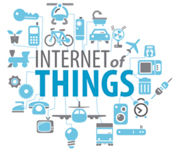|
A major milestone was achieved in the Third-Generation Partnership Project’s (3GPP’s) Radio Access Network Plenary Meeting 69 with its decision to standardize the narrowband (NB) Internet of Things (IoT), a new NB radio technology to address the requirements of the IoT. The new technology will provide improved indoor coverage, support of a massive number of low-throughput devices, low delay sensitivity, ultralow device cost, low device power consumption, and optimized network architecture. The technology can be deployed in-band, utilizing resource blocks within a normal long-term evolution (LTE) carrier, or in the unused resource blocks within an LTE carrier’s guard-band, or stand-alone for deployments in dedicated spectrum. The NB-IoT is also particularly suitable for the refarming of Global System for Mobile Communications (GSM) channels.
Ericsson, AT&T, and Altair demonstrated over ten years of battery life using LTE power-saving mode (PSM) on a commercial LTE IoT chip set platform. The demonstration runs on Ericsson networks and Altair’s FourGee-1160 Cat-1 chip set featuring ultralow power consumption. Long-term battery life has become a prerequisite for a vast number of IoT applications. PSM is an Ericsson Evolved Packet Core (EPC) feature based on 3GPP (Release 12) for both GSM and LTE networks. The feature is able to dramatically extend IoT device battery life up to ten years or more for common use cases and traffic profiles. This capability is defined for both LTE and GSM technologies and lets devices enter a new deep-sleep mode—for hours or even days at a time—and only wake up when needed. for both GSM and LTE networks. The feature is able to dramatically extend IoT device battery life up to ten years or more for common use cases and traffic profiles. This capability is defined for both LTE and GSM technologies and lets devices enter a new deep-sleep mode—for hours or even days at a time—and only wake up when needed.
Berg Insight estimates that LTE will be the leading technology for cellular IoT devices in 2019. The company estimates that global shipments of cellular IoT devices will grow at a compound annual growth rate (CAGR) of 20.1% to reach 239.7 million units in 2020. Gartner estimates that 6.4 billion connected things will be in use worldwide in 2016, which represents an increase of 30% from 2015. This figure will reach 20.8 billion by 2020. The firm expects that IoT will support total services spending of US$235 billion in 2016, representing a 22% increase from 2015.
Read the full article: IEEE Vehicular Technology Magazine, Volume 11, Issue 1, March 2016 |